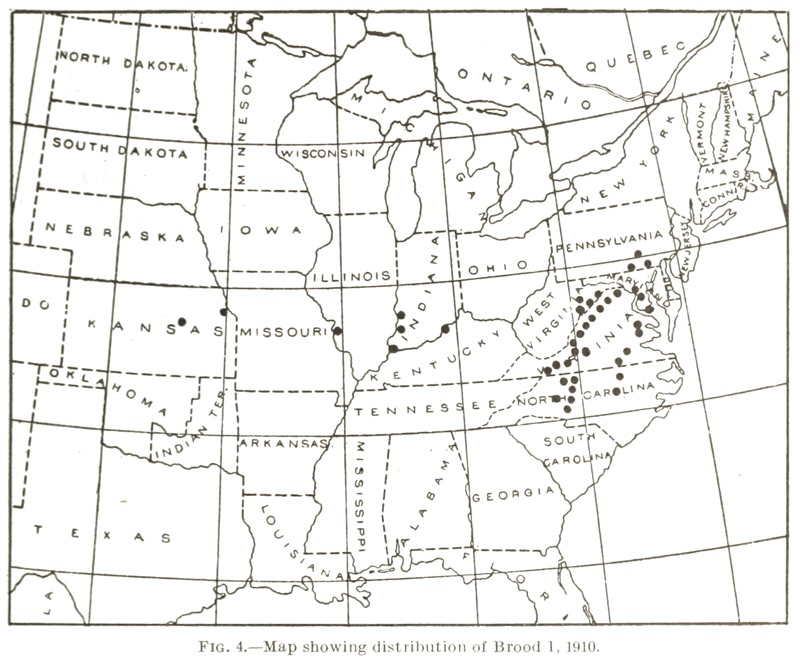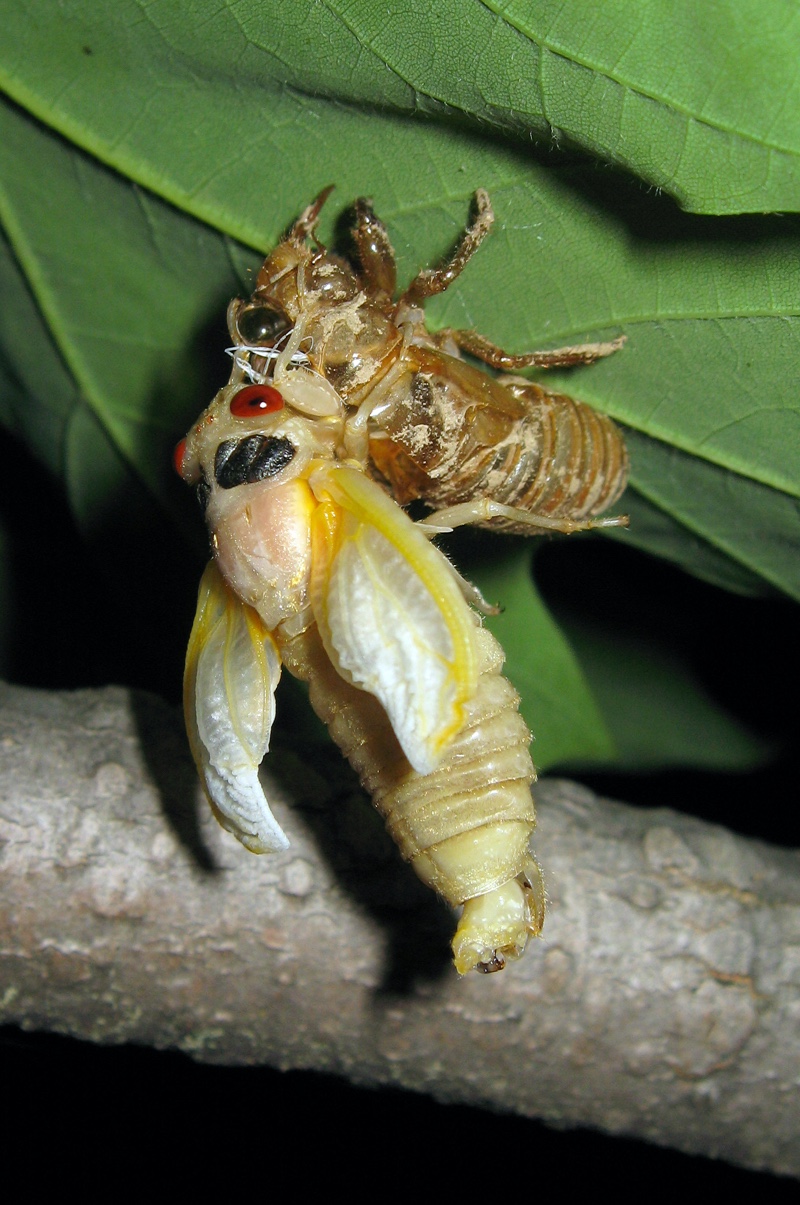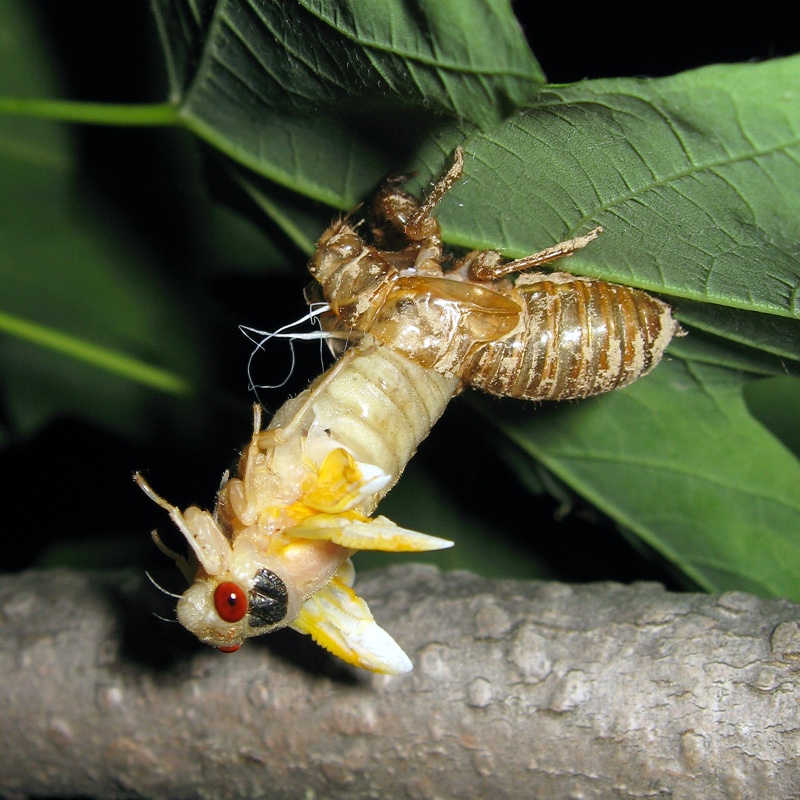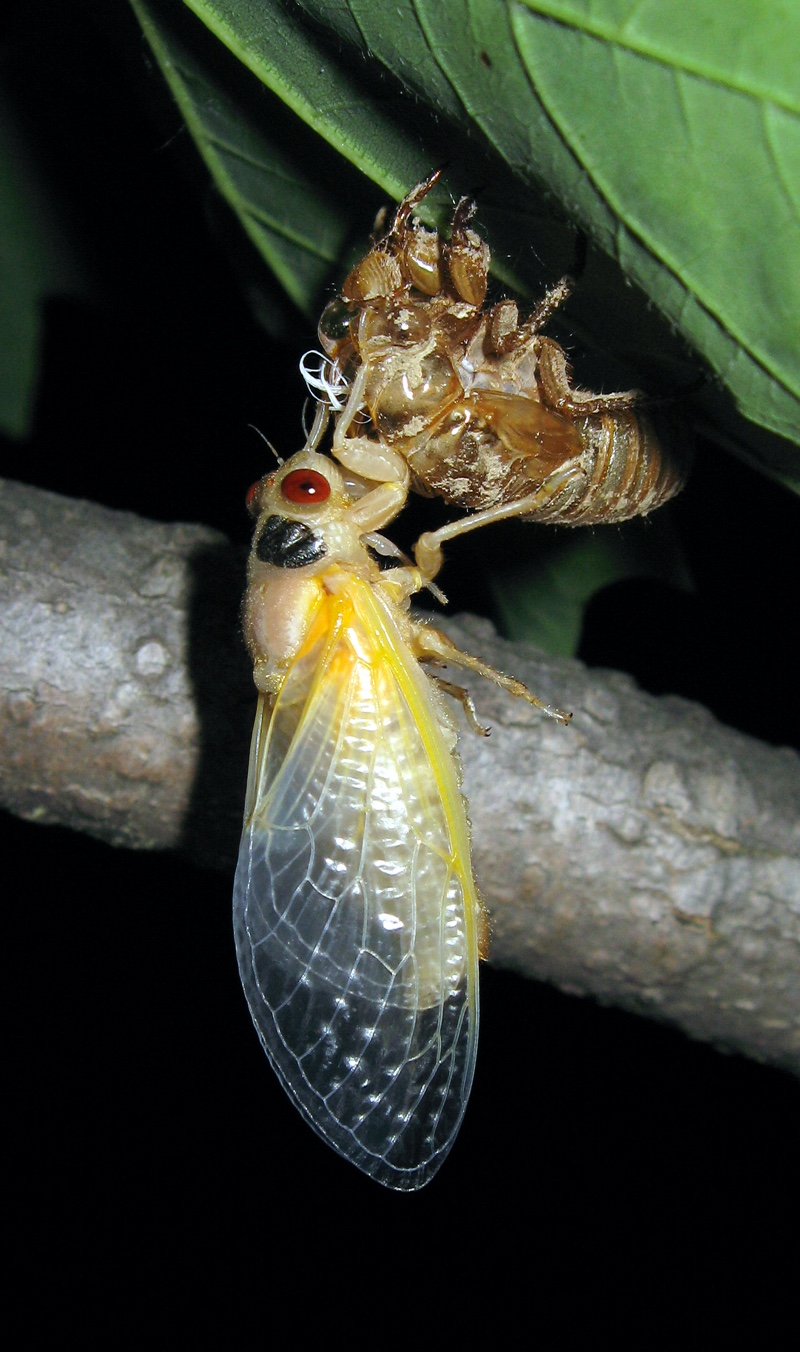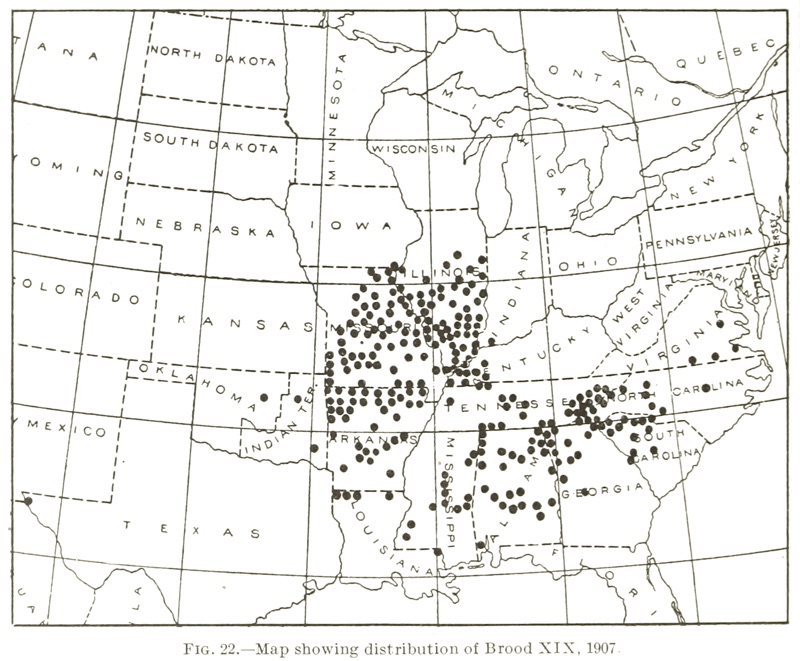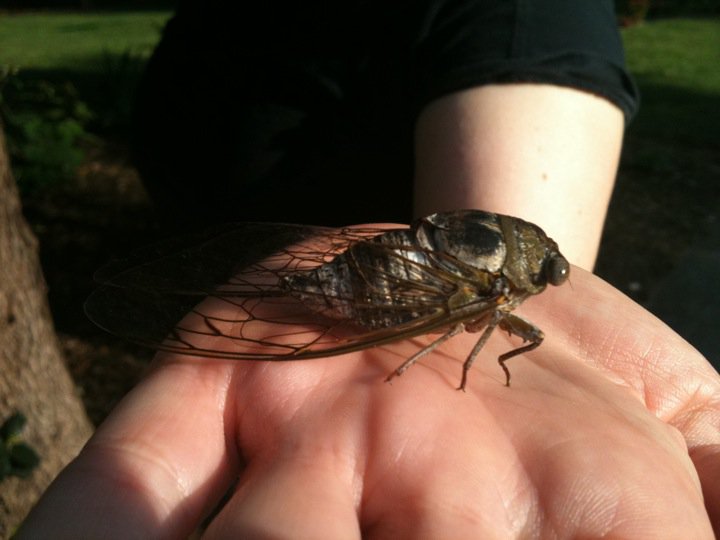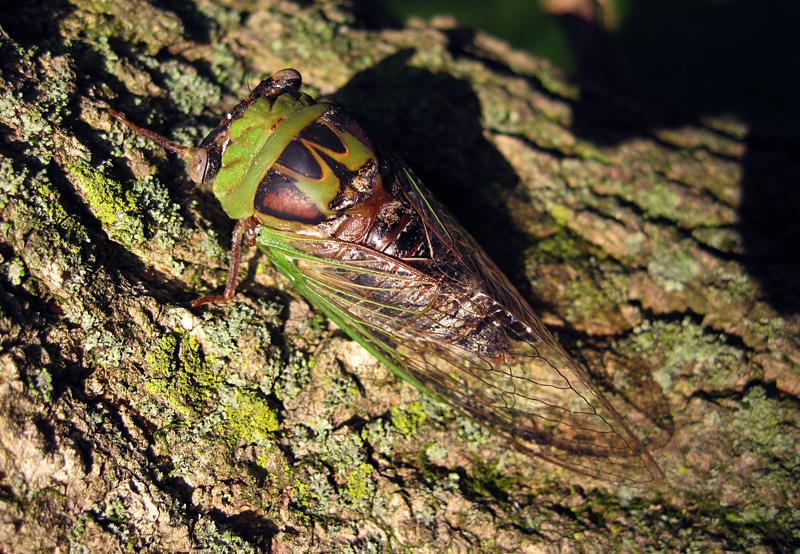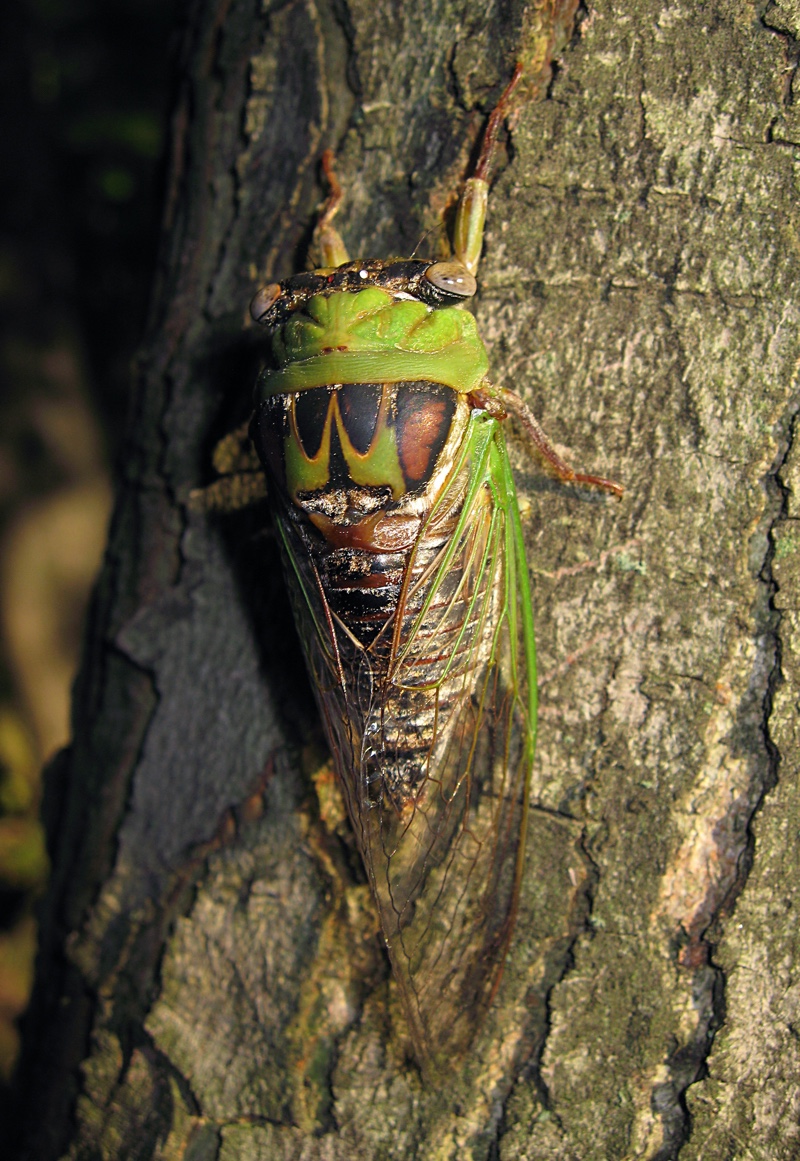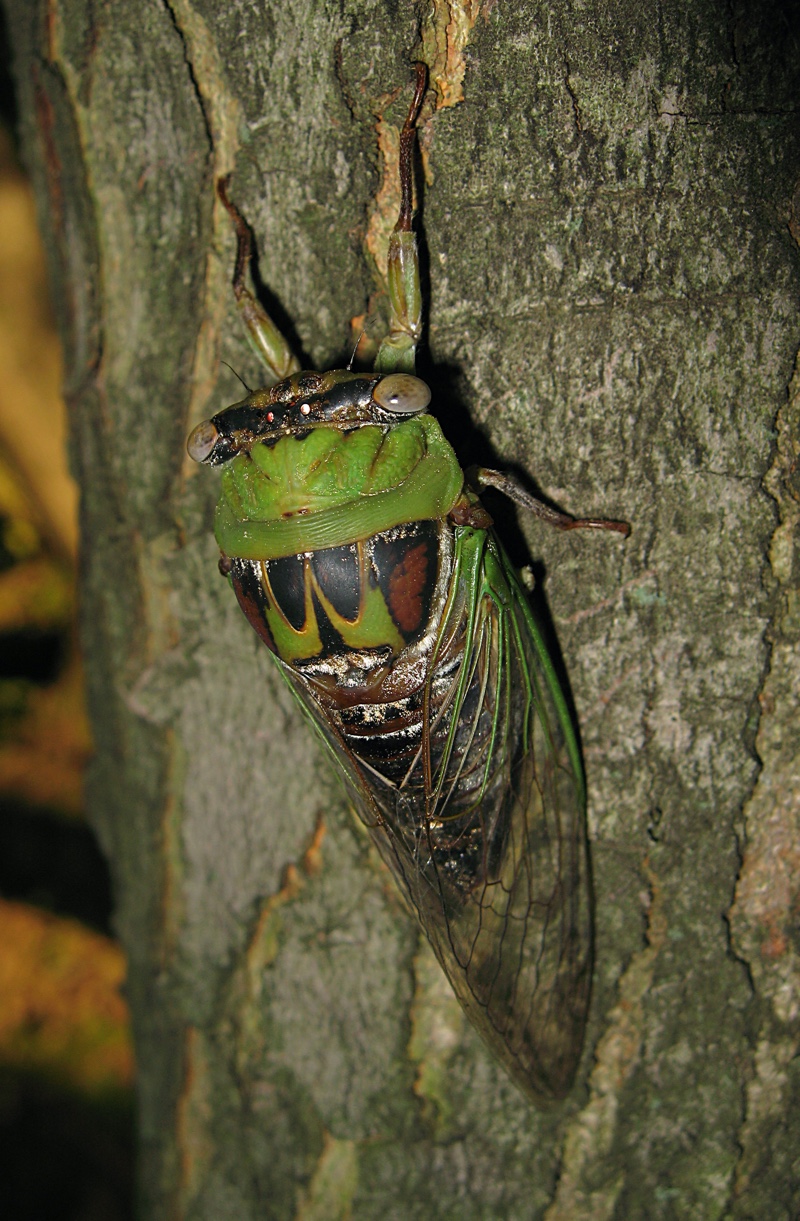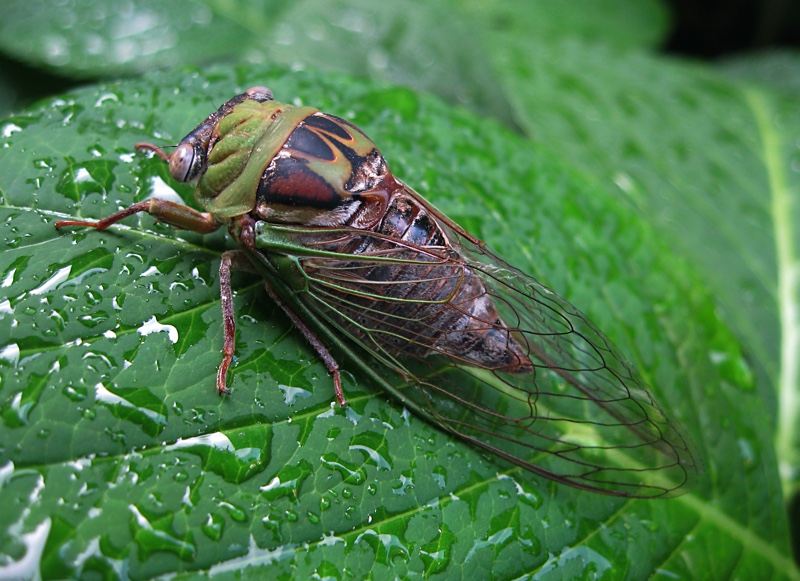Brood I will next emerge in 2029. Stragglers may emerge four years early in 2025.
When will they emerge?

Typically, once the soil 8 inches (20cm) below the surface gets to 64 degrees Fahrenheit (18 degrees Celsius) they will emerge. Cicadas in sunny areas will emerge before cicadas in shady areas. Mid-April to mid-May.
Where will they emerge?
Historically, Brood I has emerged in counties along the border of Virginia and West Virginia, including the counties: Augusta, Bath, Bedford, Botetourt, Grant, Page, Pendleton, Rockbridge, and Rockingham. There is another group that emerges on the border of Tennessee and Virginia. Visit the Cicadas @ UCONN website for an updated map of Brood I.
Important: Magicicadas won’t emerge everywhere in the counties mentioned above. They might not exist in your town or neighborhood (particularly if there’s lots of new construction, which removes trees). The key to seeing them if they don’t emerge in your neighborhood is communication: networking with friends and family, checking the interactive maps on magicicada.org, checking sites like Twitter, Facebook and YouTube.
What you should look for
Look out for cicada chimneys, turrets or holes the diameter of an adult’s finger near the root system of a tree. These are sure signs that cicadas will emerge in the area.
You might discover some cicada nymphs while turning over stones or when performing landscaping chores. They are a golden-brown color, with black coloration in the area behind their heads.
Here is a great video of Magicicada nymphs once they have emerged from the ground:
Magicicada cicada nymph mania from Cicada Mania on Vimeo.
Once cicadas nymphs have emerged from the ground, they will try to find a tree, and then begin the process of exiting their old nymph skins, drying their wings, and changing to their adult coloring. If you have the time, a flashlight and a camera you can record this amazing transformation.
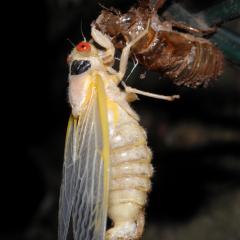
What are they?
Magicicada is a genus of periodical cicadas known for emerging in massive numbers in 17 or 13 year cycles/periods. The cicadas emerging in 2012 have 17 year life-cycles. Magicicada are also organized into broods. There are 12 broods of 17 year cicadas, and the brood emerging in 2012 is Brood I (Brood One).
There are 3 species of 17-year Magicicada: M. septendecim (aka “decims”), M. cassini, and M. septendecula. The adults of all three species have black bodies with orange markings and red-orange eyes.
Perhaps the best way to visually distinguish the adults of the three species is by observing the coloration on their abdomens: M. septendecim have broad orange stripes with more orange than black; M. cassini has black abdomens with virtually no stripes at all, and M. septendecula has stripes that feature as much black as orange. Visit this Cicadas @ UCONN species page for detailed information, including photos and audio.
M. septendecim also have an area of orange coloring between the eye and the wing: 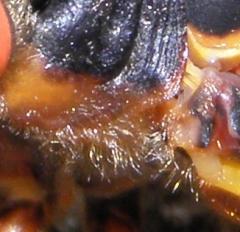
Another great what to tell their difference is to listen to their song.
Here is some video and audio of 17 year Magicicada. This will give you an idea of what to expect:
Cicada Mania, best of 2007, part 1 by Dan from Cicada Mania on Vimeo.
Note: some folks call these cicadas “locusts”, but they are not true locusts.
Why?
Why do Magicicadas wait 17 years and why do they emerge in such large numbers? There are many theories why, but the primary reason could be that they’re trying to beat the predators. Since they emerge only once every 17 years, no species can anticipate their emergence (except man), and emerging in large numbers ensures that at least some of them will survive to reproduce. See more about Cicadas and Prime Numbers.
Who?
People have many reactions to Magicicada including fear, disgust, panic, mild curiosity, fascination, and fanaticism. We hope that YOU will find them fascinating, and get involved by helping to map the emergence, upload your cicada photos and videos to sites like YouTube, Pinterest, and Flickr, and participate in discussions on Twitter and discussion forums like Reddit.
More information:
1907 Map from Marlatt, C.L.. 1907. The periodical cicada. Washington, D.C. : U.S. Dept. of Agriculture, Bureau of Entomology.
